Do you have a question about the Trane 4TWR3 and is the answer not in the manual?
Provides physical dimensions and weight for outdoor units across various models.
Defines maximum length and vertical change for refrigerant lines to ensure system performance.
Details optimal outdoor unit placement for airflow, noise reduction, and protection from elements.
Advises on elevating units and using snow barriers in cold climates for proper defrost drainage.
Covers inspecting the unit for damage and removing it from the pallet safely.
Details vapor and liquid line sizes and service valve connection sizes by model number.
Explains factory charge for standard line lengths and the smallest indoor coil match.
Prompts measurement of total line length and vertical change for accurate system charging.
Emphasizes insulating the vapor line and preventing metal-to-metal contact between lines.
Provides specific precautions for reusing existing refrigerant lines and evaporator coils.
Covers preventing noise transmission and proper securing methods to avoid vibration.
Details preparation steps like deburring, cleaning, and purging for brazing lines to valves.
Describes pressurizing lines with nitrogen and checking for leaks using a soapy solution.
Details the process of achieving and verifying vacuum levels for system evacuation.
Explains the procedure for safely opening the gas service valve to initiate refrigerant flow.
Details the safe operation of the liquid line service valve, emphasizing caution.
Specifies maximum wire lengths for low voltage connections based on wire gauge size.
Provides wiring diagrams for connecting the heat pump to various indoor units and thermostats.
Explains defrost termination temperatures and how to adjust control settings for different conditions.
Covers power supply requirements and adherence to national, state, and local codes.
Mandates the installation of a separate disconnect switch for high voltage connections.
Stresses the importance of grounding the outdoor unit according to national, state, and local codes.
Outlines the sequence for applying power and starting the system for the first time.
Details measuring outdoor and indoor temperatures as prerequisites for accurate system charging.
Explains the subcooling method for charging in cooling mode when outdoor temp is above 55°F.
Describes weighing the refrigerant charge in heating mode for low outdoor temperatures.
Lists essential checks and procedures to ensure proper system installation and operation.
Provides a guide to system faults with primary and secondary causes for diagnosis.
This document is an installer's guide for Trane 4TWR3 series heat pumps, providing comprehensive instructions for installation, start-up, and troubleshooting. It emphasizes compliance with national, state, and local codes for all installation phases.
The Trane 4TWR3 heat pump is an outdoor condensing unit designed to work with matched indoor evaporative coils to provide heating and cooling for residential or commercial buildings. It uses R-410A refrigerant and is factory charged for the outdoor unit, 15 feet of connecting line, and the smallest indoor evaporative coil match. Adjustments to the refrigerant charge are necessary for longer line lengths or larger indoor coils.

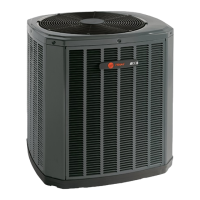
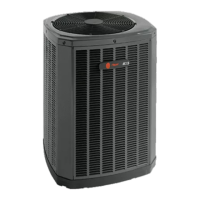



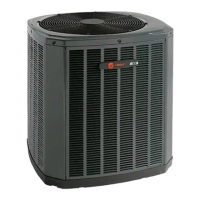
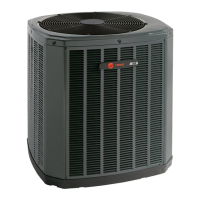
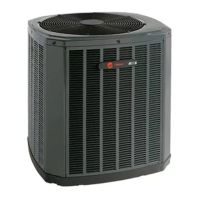
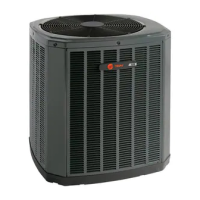


